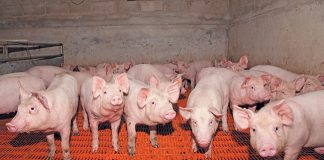
Photo: Adobe Stock
Bee populations around the world are in decline, among them many species of wild bumblebees.
New research by the University of Vermont in the US has found that diseases transmitted by domestic honeybees could be to blame for this.
Lead researcher Samantha Alger, an expert beekeeper and researcher in the university’s Department of Plant and Soil Science and Gund Institute for Environment, found that several of the viruses affecting bumblebees had spread from managed bees in apiaries to nearby populations of wild bumblebees.
Her research had shown that this was occurring due to different species of bees sharing flowers during pollination.
“Many wild pollinators are in trouble and this finding could help us protect bumblebees,” she said. “This has implications for how we manage domestic bees and where we locate them.
In recent years there has been a global shift in our view of wild pollinators as population have become threatened by disease, which in turn threatens key crops.”
Honeybees (Apis mellifera) were at a high risk, due to numerous factors, including land degradation and the use of pesticides, she said.
Native bee populations such as the rusty patched bumblebee (Bombus affinis) were being listed as severely threatened in terms of the Endangered Species Act in the US, as populations had declined by an estimated 90%.
This species had long been a key pollinator of various fruit crops such as cranberries, plums, apples and other agricultural plants.
The research team discovered that two well-known RNA viruses found in honeybees, the deformed wing virus and the black queen cell virus were more prevalent in bumblebees collected less than 300m from commercial beehives.
The study also found that active infections of the deformed wing virus were higher near commercial apiaries, but no deformed wing virus infections were found in the bumblebees collected where foraging honeybees and apiaries were absent.
The results of the research suggested that “viruses in managed honeybees are spilling over to wild bumblebee populations and flowers are an important route”, said Prof Alison Brody of the university’s Department of Biology and senior author of the study.
“Careful monitoring and treating of diseased honeybee colonies could protect wild bees from these viruses as well as other pathogens or parasites.”
Alger commented that there was a connection between the long-distance transportation of honeybees for commercial pollination and the spread of diseases.













